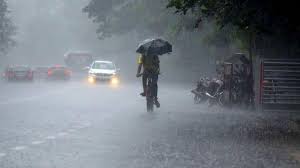New Delhi, December 12, 2024: Looking into the La Niño and El Niño factors, the Centre has been conducting regular studies on monsoons and associated rainfall and temperature patterns in the country.
The Ministry has been conducting regular studies on monsoons and associated rainfall and temperature patterns in the country, including those during the La Niña period, Union Minister of State (Independent Charge) for Science & Technology and Earth Sciences Dr. Jitendra Singh in a written reply in the Rajya Sabha said today.

The India Meteorological Department (IMD) continuously monitors the Sea Surface Temperature (SST) changes globally, especially in the Pacific and Indian Oceans. IMD also prepares forecasts using climate model and issue the El Niño–Southern Oscillation (ENSO/IOD) bulletin every month, Singh said.
Additionally, the IMD issues agriculture-specific advisories to help farmers prepare for extreme weather events associated with La Niña, such as heavy rains or droughts. These advisories may include recommendations on crop selection, irrigation practices, and flood preparedness, he said.

La Niña, a climate phenomenon characterized by notably cooler sea surface temperatures (SST) in the central and eastern Pacific Ocean, can significantly impact the Indian monsoon, the Minister said.
In general, during a La Niña event, normal to above-normal rainfall is received over India during the southwest monsoon season.
Most parts of the country receive above-normal rainfall during the La Nina years, except extreme north India and some areas over Northeast India, where rainfall below normal is likely during the La Nina years.
Also, below-normal temperatures are generally observed during the winter season during the La Nina years. While excessive rainfall during La Nina can lead to flooding, crop damage, and livestock loss, it can also benefit rainfed agriculture and groundwater levels. Increased rainfall associated with La Niña can sometimes lead to lower temperatures over the Indian region, which might affect the growth and development of certain Kharif crops, he added.
More Stories
Paddy procurement accelerates, Token Tuhar Hath app simplifies procurement process
The procurement of paddy from farmers at the support price continues uninterrupted in all districts of Chhattisgarh.
Historic Implementation of Labour Reforms Under the Leadership of Prime Minister Narendra Modi: Chief Minister Sai
Chhattisgarh Chief Minister Vishnu Dev Sai today praised the leadership of Prime Minister Narendra Modi and Union Labour and Employment Minister Dr. Mansukh Mandaviya for the “historic” implementation of four labour codes in the country.
Digitization of over 6.5 million forms completed in the Special Intensive Revision (SIR) campaign
The Special Intensive Revision (SIR) of voter lists is underway in Chhattisgarh in full swing.
Chief Minister Sai presents Bastar Art statue of Birsa Munda to President Murmu
An inspiring and solemn moment was witnessed at a function held in Ambikapur on the occasion of Janjatiya Gaurav Diwas (Tribal Pride Day), when Chief Minister Vishnu Dev Sai presented a memento to President Droupadi Murmu, a statue of Dharti Aba Bhagwan Birsa Munda, created in Bastar Art.
Tribals getting new opportunities for education, livelihood, health and development: President Droupadi Murmu
President Droupadi Murmu today described the Central Government’s ‘Adi Karmayogi Abhiyan’, ‘Dharti Aba Janjati Gram Utkarsh Abhiyan’, and ‘Pradhan Mantri Janman Abhiyan’ as important steps for the upliftment of tribal society.
CM Sai, Union Minister Chouhan Release ChhattisKala Brand
With the aim of providing a single identity and a unified market platform for quality products, Chhattisgarh Chief Minister Vishnu Dev Sai and Union Agriculture and Rural Development Minister Shivraj Singh Chouhan today launched the much-awaited unified state brand, ChhattisKala, at the Dhamtari district headquarters.


